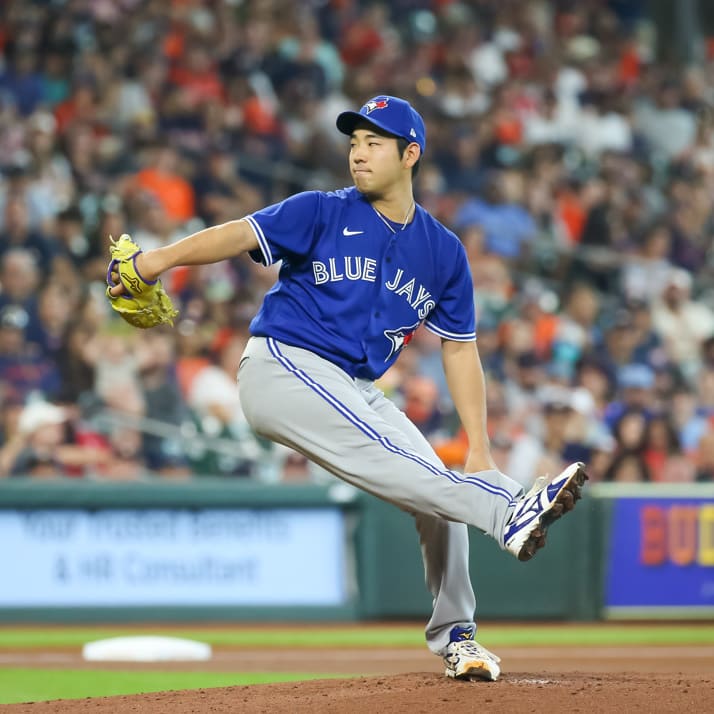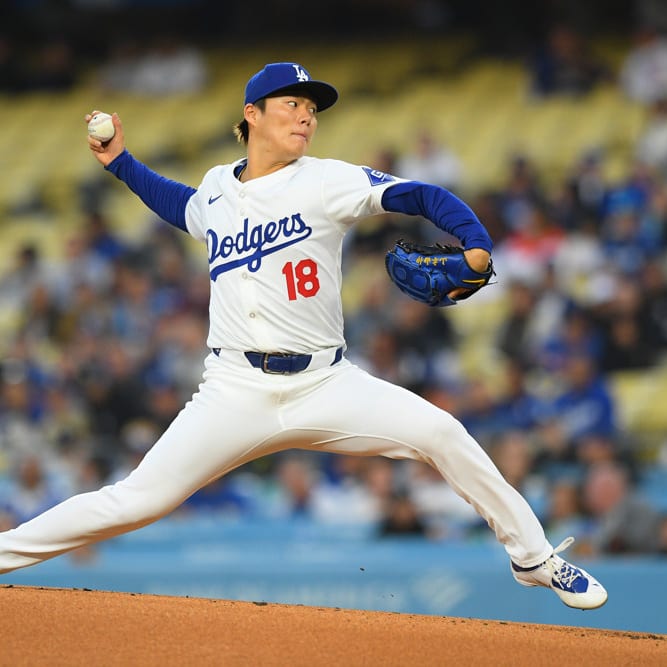This article is part of our The Long Game series.
FAAB Strategy in Keeper Leagues
Traditionally, there have been two main philosophies when it comes to spending your FAAB dollars in fantasy leagues. One strategy involves a very active approach, as you keep watchful eye on the free agent pool and waiver wire and constantly churn the bottom of your roster looking for potential value. Typically this strategy features a lot of small dollar transactions with the occasional foray into higher salary territory in specific circumstances (a newly minted closer, for instance). The other strategy involves holding back your budget for surer things and making sure you get them with big bids, whether it be those aforementioned newly minted closers or, more commonly, stars traded into the player pool in AL-only and NL-only leagues. While your opponents bleed their budgets with smaller pickups, you position yourself to be the team that can guarantee the acquisition of real difference-makers when they appear.
In most leagues you'll see a mix of both strategies in action, as some owners play small ball and stay very active in FAAB, and some keep their powder dry for the biggest fish, and at first blush it might seem like both strategies can be equally effective depending on a team's specific circumstances (whether they are playing for this year or next, whether they have roster or category holes to fill, etc.) In redraft leagues this can certainly be true, although I think the general argument for pursuing the more active strategy is a stronger one.
In keeper
FAAB Strategy in Keeper Leagues
Traditionally, there have been two main philosophies when it comes to spending your FAAB dollars in fantasy leagues. One strategy involves a very active approach, as you keep watchful eye on the free agent pool and waiver wire and constantly churn the bottom of your roster looking for potential value. Typically this strategy features a lot of small dollar transactions with the occasional foray into higher salary territory in specific circumstances (a newly minted closer, for instance). The other strategy involves holding back your budget for surer things and making sure you get them with big bids, whether it be those aforementioned newly minted closers or, more commonly, stars traded into the player pool in AL-only and NL-only leagues. While your opponents bleed their budgets with smaller pickups, you position yourself to be the team that can guarantee the acquisition of real difference-makers when they appear.
In most leagues you'll see a mix of both strategies in action, as some owners play small ball and stay very active in FAAB, and some keep their powder dry for the biggest fish, and at first blush it might seem like both strategies can be equally effective depending on a team's specific circumstances (whether they are playing for this year or next, whether they have roster or category holes to fill, etc.) In redraft leagues this can certainly be true, although I think the general argument for pursuing the more active strategy is a stronger one.
In keeper leagues however, owners that hang back and use the second strategy are voluntarily putting themselves at a serious competitive disadvantage.
Getting In On the Ground Floor
In a keeper league, you should always be looking to get the best players at the lowest possible salaries. Owners who adopt a big bid approach shut themselves out of the second part of that equation by waiting until the player's value is more obvious. It makes the player a "safer" buy, but also drives up his price and all but rules him out as a potential keeper for next season. In order to get players at those lowest possible salaries, an owner has to be more aggressive in their bidding. Rather than wait for a reliever to be named closer, or for a veteran outfielder to replace a struggling rookie starter, go after those players while their job descriptions are still modest. Sure, the odds are better that the player you buy might never be worth acquiring (either because the incumbent turned things around or because someone else ended up taking the reins instead) but when you do make the right call you not only get the same amount of value from the player that you would have gotten had you waited until his manager made it official, you get that value at a fraction of the salary, and that should always be the primary goal in keeper leagues. And when you do get a buy wrong, as you will from time to time, the blow to your FAAB budget is a lot less painful.
Even if you're competing for a title this year instead of building for the future, it's important to bring in new talent as cheaply as possible simply because it gives you more tradeable assets for dump deals. A player bought at or above his market value isn't going to be of interest to a rebuilding team. A player bought for even a little less than his earnings, however, can potentially be flipped for a more valuable player with a higher salary or expiring contract.
In short, to paraphrase Branch Rickey: buy a player a week too early rather than a week too late.
The Winner's Curse
The "winner's curse" is an economic theory stating that the winner of any auction, where the bidders have equal knowledge of and equal use for the item up for bid, is likely to overpay for that item. The average of the valuations of the bidders might accurately reflect the true value of the item, but it's not the average bid that wins – it's the furthest outlier that brings it home. Fantasy baseball free agent auctions don't quite conform to that theoretical ideal, as different owners will have different needs at any given time, but it's still an important concept to keep in mind. If you're only focused on making big bids on free agents with established perceived value, your choices essentially come down to winning those hotly-contested auctions and overpaying for those wins, or losing the auctions and having nothing to show for your FAAB dollars. Sure, every once in a while a big winning bid might prove to be worth it (just ask an NL-only league owner who landed Manny Ramirez in 2008) but in the long run a big bid strategy will prove to be a loser.
While the "winner's curse" will also affect the owner who makes more frequent, smaller bids, that owner greatly improves their chances of mitigating or avoiding its effects. The math behind the "winner's curse" theory suggests that it has a stronger impact when more people are involved in the auction. The larger the pool of bidders, the more likely it is that the winning outlier bid is going to overshoot the true value of the player being bought, and by a wider margin. Conversely, the fewer people in on the bidding, the better the odds that you actually get a bargain, or at least acquire the player at or about his true value.
This is not to say that it's bad to win an auction. If all you need to lock up a title is one more closer, and the largest remaining FAAB budget from any of your fellow owners is $76, you are perfectly justified in bidding $77. Flags fly forever and all that. Just understand that there's no way that guy will actually earn $77 in value for you.
FAAB Inflation
The final nail in the big bid strategy coffin is provided by the calendar. A baseball season is only six months long, and every week that ticks by is a week of potential value added to your roster through your FAAB budget lost. A player who ends up earning $10 bought in early April by an aggressive owner can add more total value to your roster than a $25 player added in late July with a big trade deadline buy. Worse than that, though, every week that slips also reduces the value of your remaining FAAB budget.
FAAB dollars have a limited shelf life. You can't carry them over to next season. Just as at the auction table, every dollar you don't spend is a dollar wasted. What this means in practice is that as the season progresses, the pressure to spend your FAAB increases. Bids go up as the summer drags on simply because owners become paranoid that there might not be anybody else worth throwing their money at.
If you plotted those two trends on a graph, you'd find that the total cumulative earnings of FAAB buys drops over the course of time, while the average FAAB dollars spent on individual bids increases. The lines wouldn't be smooth, of course, but the overall slopes would be clear, and the gap between spending and earnings would widen as the months go by. Just as in normal economic terms a dollar earned this year is worth more than a dollar earned next year due to inflation, a FAAB dollar spent in April has a better ROI than a FAAB dollar spent in August. And while there's certainly something to be said for the idea that buys made later in the season can be more "valuable" in the sense that they will better address needs which may not be apparent (or even exist) earlier in the year, only in rare cases will that utility be enough to compensate for that widening ROI gap.
Of course, if every owner in your league adopts an aggressive, small-ball FAAB strategy, there will be more competition for trendy "sleeper" picks (those aforementioned pre-closers and veterans looking to bump aside slumping rookies) and prices on them will go up. At a certain point the balance in value might tip back towards the more patient, big bid owner, as the "winner's curse" chews up a larger and larger slice of other owners' budgets. Even in those environments, however, you should still try to be aggressive and make smart bids on players before their earnings potential is established. After all, the worst case scenario if you still get outbid on those players is that you'll have more money later in the season to fall back on that sub-optimal big bid strategy as a last resort.









